
Roche de Roissel was a castle located on the Mediterranean Sea coast, which was built on the maritime slope of the Amanus. [1]

Roche de Roissel was a castle located on the Mediterranean Sea coast, which was built on the maritime slope of the Amanus. [1]
The castle was held by the Knights Templar within the Principality of Antioch, until it was captured by Saladin in 1188. It was retaken by Templars in 1198, then seized by Cilician Armenia in 1203. However, it was eventually abandoned following the Siege of Antioch in 1268. [1]
The authors have disagreed with the exact location of this castle. [2] According to some authors, it was located on the coast, [3] while another Templar castle, Roche-Guillaume, would be Çalan Kalesi, but Claude Cahen argued that Çalan might be Roche de Roissel. [4]
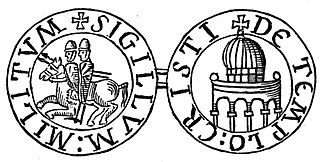
The Poor Fellow-Soldiers of Christ and of the Temple of Solomon, also known as the Order of Solomon's Temple, the Knights Templar, or simply the Templars, was a Catholic military order, one of the most wealthy and popular of the Western Christian military orders. They were founded in 1119, headquartered on the Temple Mount in Jerusalem, and existed for nearly two centuries during the Middle Ages.
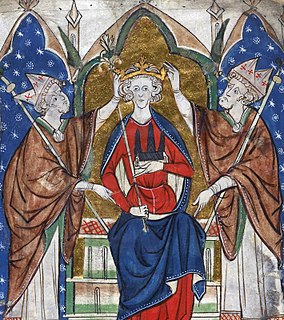
Year 1216(MCCXVI) was a leap year starting on Friday of the Julian calendar.
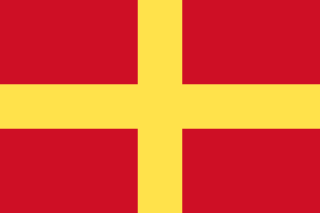
The County of Tripoli (1102–1289) was the last of the Crusader states. It was founded in the Levant in the modern-day region of Tripoli, northern Lebanon and parts of western Syria which supported an indigenous population of Christians, Druze and Muslims. When the Frankish Crusaders – mostly southern French forces – captured the region in 1109, Bertrand of Toulouse became the first count of Tripoli as a vassal of King Baldwin I of Jerusalem. From that time, the rule of the county was decided not strictly by inheritance but by factors such as military force, favour and negotiation. In 1289 the County of Tripoli fell to Sultan Qalawun of the Muslim Mamluks of Cairo. The county was absorbed into Mamluk Egypt.
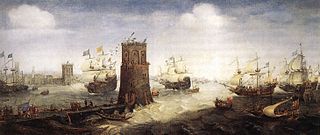
The Fifth Crusade (1217–1221) was a campaign in a series of Crusades by Western Europeans to reacquire Jerusalem and the rest of the Holy Land by first conquering Egypt, ruled by the powerful Ayyubid sultanate, led by al-Adil, brother of Saladin.

Robert IV de Sablé was Lord of Sablé, the eleventh Grand Master of the Knights Templar from 1191 to 1192 and Lord of Cyprus from 1191 to 1192. He was known of as the Grand Master of the Knights Templars and the Grand Master of the Holy and Valiant Order of Knights Templars.

Thibaud Gaudin was the Grand Master of the Knights Templar from August 1291 until his death in April 1292.

Thomas Bérard, was the 20th Grand Master of the Knights Templar, from 1256 to 1273.

Guillaume de Beaujeu, aka William of Beaujeu was the 21st Grand Master of the Knights Templar, from 1273 until his death during the siege of Acre in 1291. He was the last Grand Master to preside in Palestine.

Guérin de Montaigu, also known as Garin de Montaigu or Pierre Guérin de Montaigu, was a nobleman from Auvergne, who became the fourteenth Grand Master of the Knights Hospitaller, serving from 1207–1228. He succeeded the Grand Master Geoffroy le Rat after his death in 1206, and was succeeded by Bertrand de Thessy.

La Roche-Guillaume was a medieval fortress of the Knights Templar located near the Syrian Gates in what is now the Hatay Province of Turkey.
Templar of Tyre is the conventional designation of the anonymous 14th-century historian who compiled the Old French chronicle known as the Deeds of the Cypriots. The Deeds was written between about 1315 and 1320 on Cyprus and presents a history of the Crusader states and the Kingdom of Cyprus from 1132 down to 1309 as well as an account of the trials of the Templars in 1314. It is divisible into three parts and the third, which is the original work of the compiler, is the most important source for the final years of the Kingdom of Jerusalem and one of only two eyewitness accounts of the fall of Acre in 1291.

Abbans-Dessus is a commune in the Doubs department in the Bourgogne-Franche-Comté region in eastern France.
The original historic Knights Templar were a Christian military order, the Order of the Poor Fellow Soldiers of Christ and of the Temple of Solomon, that existed from the 12th to 14th centuries to provide warriors in the Crusades. These men were famous in the high and late Middle Ages, but the Order was disbanded very suddenly by King Philip IV of France, who took action against the Templars in order to avoid repaying his own financial debts. He accused them of heresy, ordered the arrest of all Templars within his realm, put the Order under trial and many of them burned at the stake. The dramatic and rapid end of the Order led to many stories and legends developing about them over the following centuries. The Order and its members increasingly appear in modern fiction, though most of these references portray the medieval organization inaccurately.

The fall of Ruad in 1302 was one of the culminating events of the Crusades in the Eastern Mediterranean. When the garrison on the tiny Isle of Ruad fell, it marked the loss of the last Crusader outpost on the coast of the Levant. In 1291, the Crusaders had lost their main power base at the coastal city of Acre, and the Muslim Mamluks had been systematically destroying any remaining Crusader ports and fortresses since then, forcing the Crusaders to relocate their dwindling Kingdom of Jerusalem to the island of Cyprus. In 1299–1300, the Cypriots sought to retake the Syrian port city of Tortosa, by setting up a staging area on Ruad, two miles (3 km) off the coast of Tortosa. The plans were to coordinate an offensive between the forces of the Crusaders, and those of the Ilkhanate. However, though the Crusaders successfully established a bridgehead on the island, the Mongols did not arrive, and the Crusaders were forced to withdraw the bulk of their forces to Cyprus. The Knights Templar set up a permanent garrison on the island in 1300, but the Mamluks besieged and captured Ruad in 1302. With the loss of the island, the Crusaders lost their last foothold in the Holy Land. Attempts at other Crusades continued for centuries, but the Europeans were never again able to occupy any territory in the Holy Land until the 20th century, during the events of World War I.
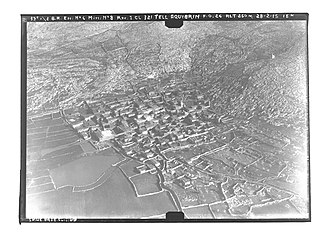
Tell Elkarame is a Syrian village located in Al-Dana Nahiyah in Harem District, Idlib. According to the Syria Central Bureau of Statistics (CBS), Tell Elkarame had a population of 3785 in the 2004 census.
Latin Diocese of Tortosa in Syria was a Roman Catholic diocese established in the Syrian city of Tartus after the First Crusade. It had a resident bishop between 1128 and 1291. The cathedral of Tortosa became the site of a Marian shrine.
Walter de Sourdeval was a constable of the Principality of Antioch (1134–1140) and Lord of Laitor.